Note: This Post was updated in October 2021
Autumn’s rich hues are on display all around us. Sunlit days, frosty nights, and yards covered in leaves are a trademark of the season. Soon we’ll commence raking, bagging, and disposing of leaves. What a chore. But wait, what if there was an easier way to dispose those leaves? One that would save you from bagging and benefit your garden at the same time? Let me introduce you to leaf mold — a solid gold soil amendment for your garden!

What is Leaf Mold?
When deciduous trees drop their leaves you get a free source of one of the best soil conditioners available. If you garden, you need to take advantage of this! Leaf mold is simply the result of decomposed leaves. When fully decomposed, leaves create a rich, dark brown humus with a crumbly texture similar to compost. Where compost adds texture and fertility to the soil, leaf mold greatly improves soil structure. It’s not the same as compost — it doesn’t have the same nutrient values — but as a soil conditioner, it’s unbeatable.
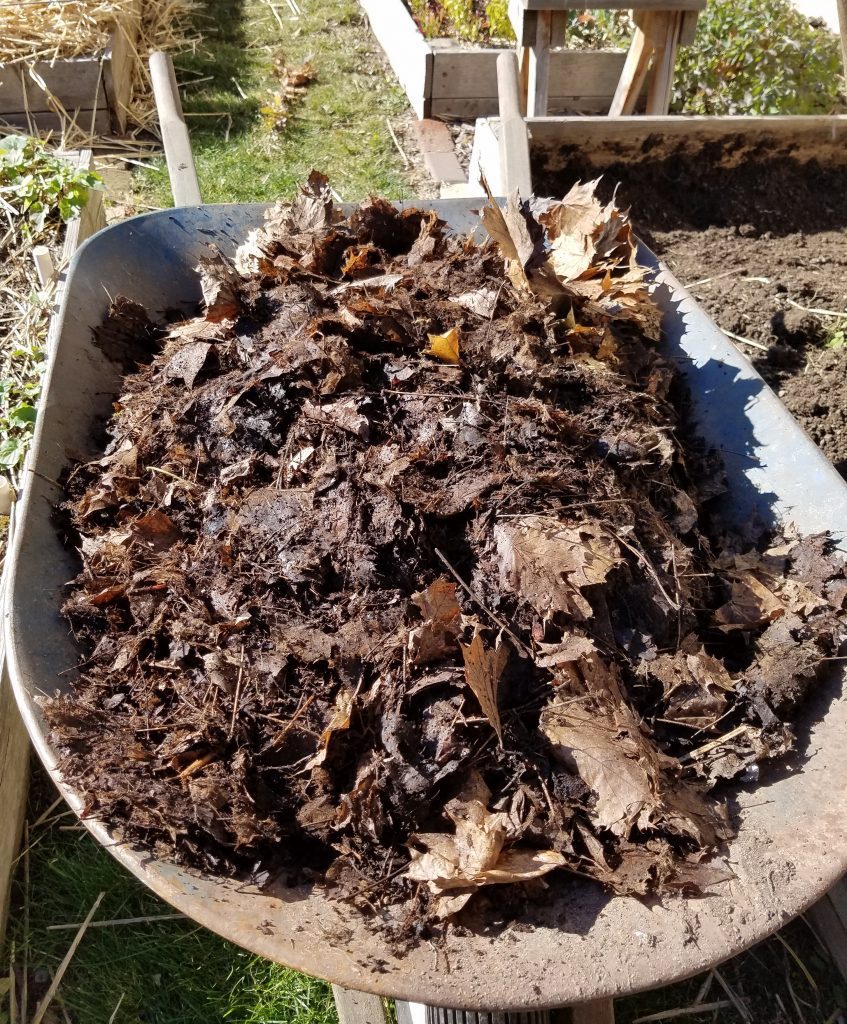
Benefits of Leaf Mold
Up to 80% of all nutrients that trees extract from the ground end up in its leaves. Plus leaves contain twice the mineral content of manure. It’s good stuff! When decomposed, leaves provide the perfect habitat and food source for your soil’s microbes and earthworms.
Leaf mold also has high water-retention properties, making it a wonderful amendment for clay or compacted soils. Turning leaf mold in with a rich compost will restore the soils structure, water-holding capabilities, texture, and of course, fertility. It’s golden!
How to Make Leaf Mold
It couldn’t be easier to make leaf mold. In its most basic form, all you need are leaves and time. Leaves can be piled in a bin or cage or just heaped in an unused area of your yard.
I have two leaf bins — one made of square of plastic fencing and second bin made from two panels of thin, steel re-mesh (used in concrete work). These have been cut into four, 4 x 4 foot panels and held together with wire ties.
Depending on the size of the leaves and the size of the leaf pile, it can take anywhere from two to three years to fully decompose.
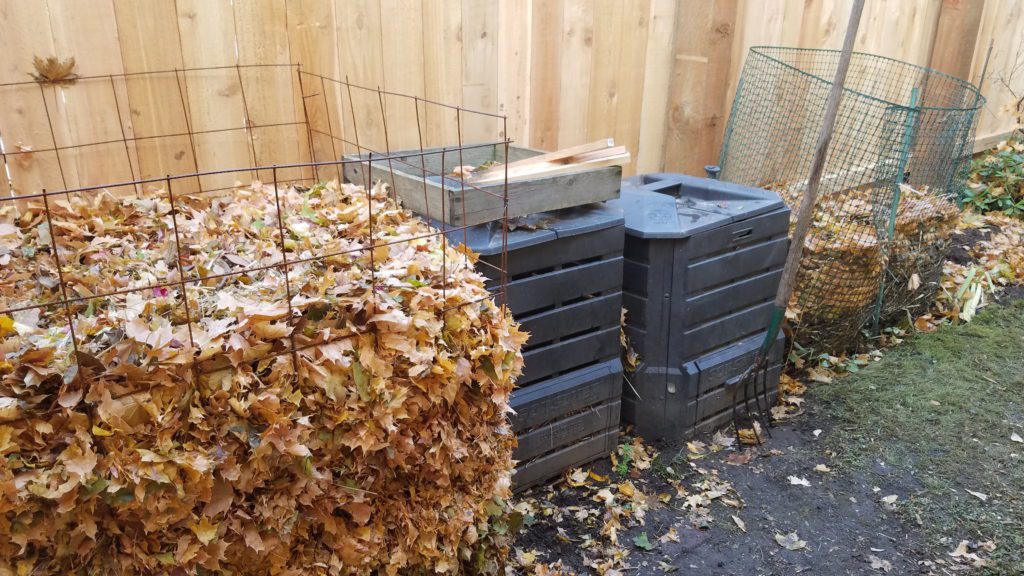
But if you’re in a hurry, like I always am, you can shred your leaves with a lawnmower with a bagger attached. The finer the shred the faster the decomposition – and mowing the leaves reduces the time to about a year — or less.
That means the leaves you shred now will be ready to use as leaf mold in your garden next fall! To help further the process along, occasionally wet the pile and turn it, similar to how you treat a compost pile.
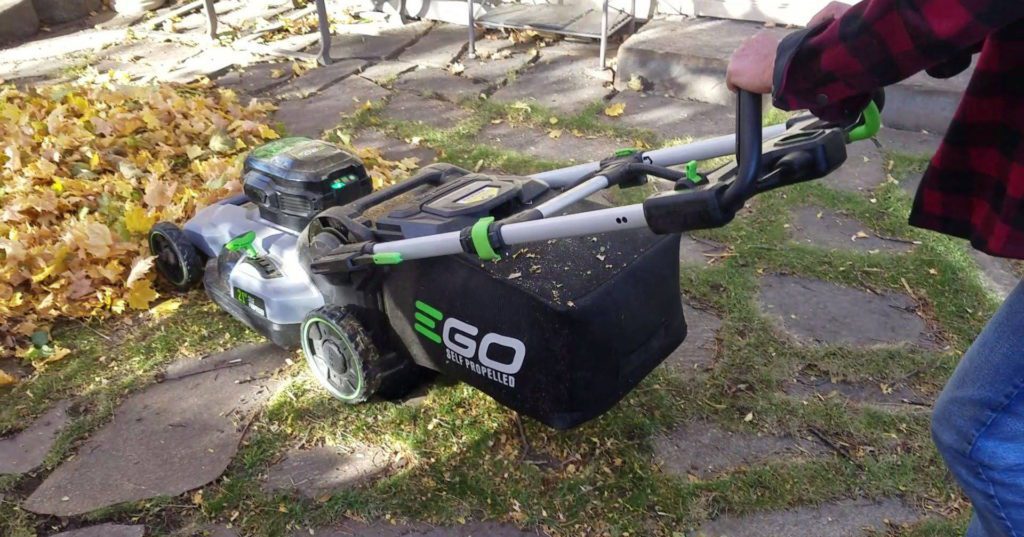
A few years ago, before I had my new fancy lawnmower, I filled my leaf bin with whole leaves — and just left them be. I never turned the pile, although it was a pretty wet fall and winter. The following fall, the leaf mold in the bin was about 75% decomposed — with the bottom layer completely decomposed (and crawling with big, fat earthworms).
I had to tear up the remaining whole leaves, but I still had a decent amount of leaf mold to use. That said, I still recommend shredding the leaves before adding them to your pile.
How to Use Leaf Mold
Leaf mold should be added to your garden’s soil in the fall. Over the winter the leaf material will breakdown, feeding the worms and microbes and improving the soil structure.
A few years ago, the soil in my raised beds was due for conditioning. I dug out the soil and added a layer of leaf mold. There were still some large, whole leaves, but they continued to decompose over winter.
Then I layered the soil on top of the leaf mold and finished by adding a layer of rich compost. The final step was topping each bed off with a layer of straw to prevent weeds and soil erosion. The follow spring my soil was rich and ready to go!
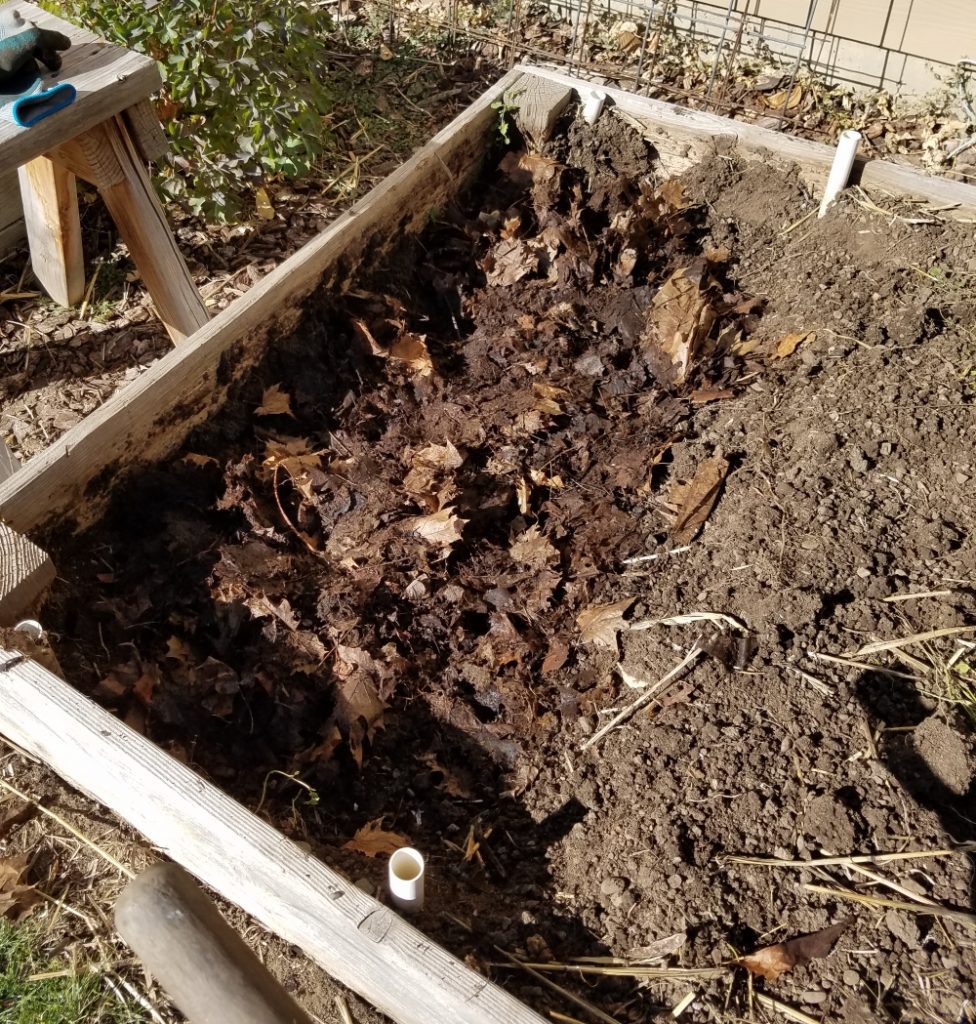
Leaves in The Rest of the Garden
In addition to being a super soil conditioner, leaf mold also makes a great mulching material. I use it on my raised beds and around my flowers beds and shrubs to prevent weeds and reduce soil erosion.
But, if you don’t have the time or space to make leaf mold, you can still use those freshly fallen leaves in your garden. A thick layer of fresh leaves used as mulch will still help to prevent weeds and reduce soil erosion.
I recommend shredding leaves for mulch as they will slowly incorporate into the soil over the winter. Of course, whole leaves work too, but you may have to remove them from your garden in the spring.
And that’s because whole leaves tend to mat down over the winter and form a pretty water-tight barrier on top of the soil — plus they’ll continue to keep the soil temperature cool.
Remember, in the spring we want our soil to warm up, so it’s a good idea to rake out any whole leaves that remain in your garden the spring.
I like things tidy, but it’s also a good idea to just let some leaves fall in and around the garden. These leafy areas will provide a nice winter home for those beneficial insects who work so hard in our gardens all summer.
While it still may be a chore to rake leaves in the fall, at least you can put them to work in your garden and enjoy the conditioning benefits that leaf mold delivers to your soil!
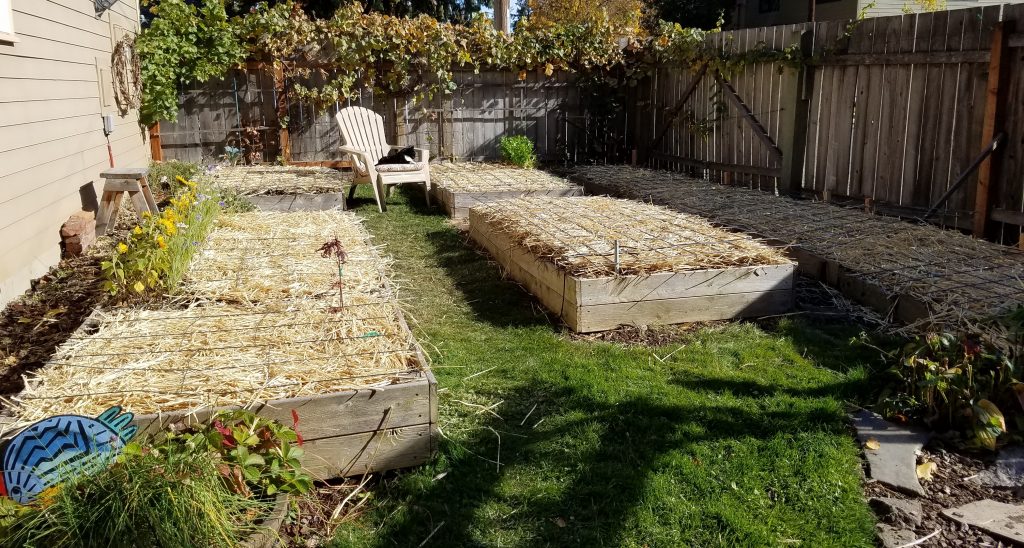


[…] One of the best soil conditioners available is leaf mold. Sounds kinda icky, but decomposed leaves really are solid gold for your garden’s soil. Take advantage of this free resource for your garden. See photos and read more about how to make leaf mold here! […]